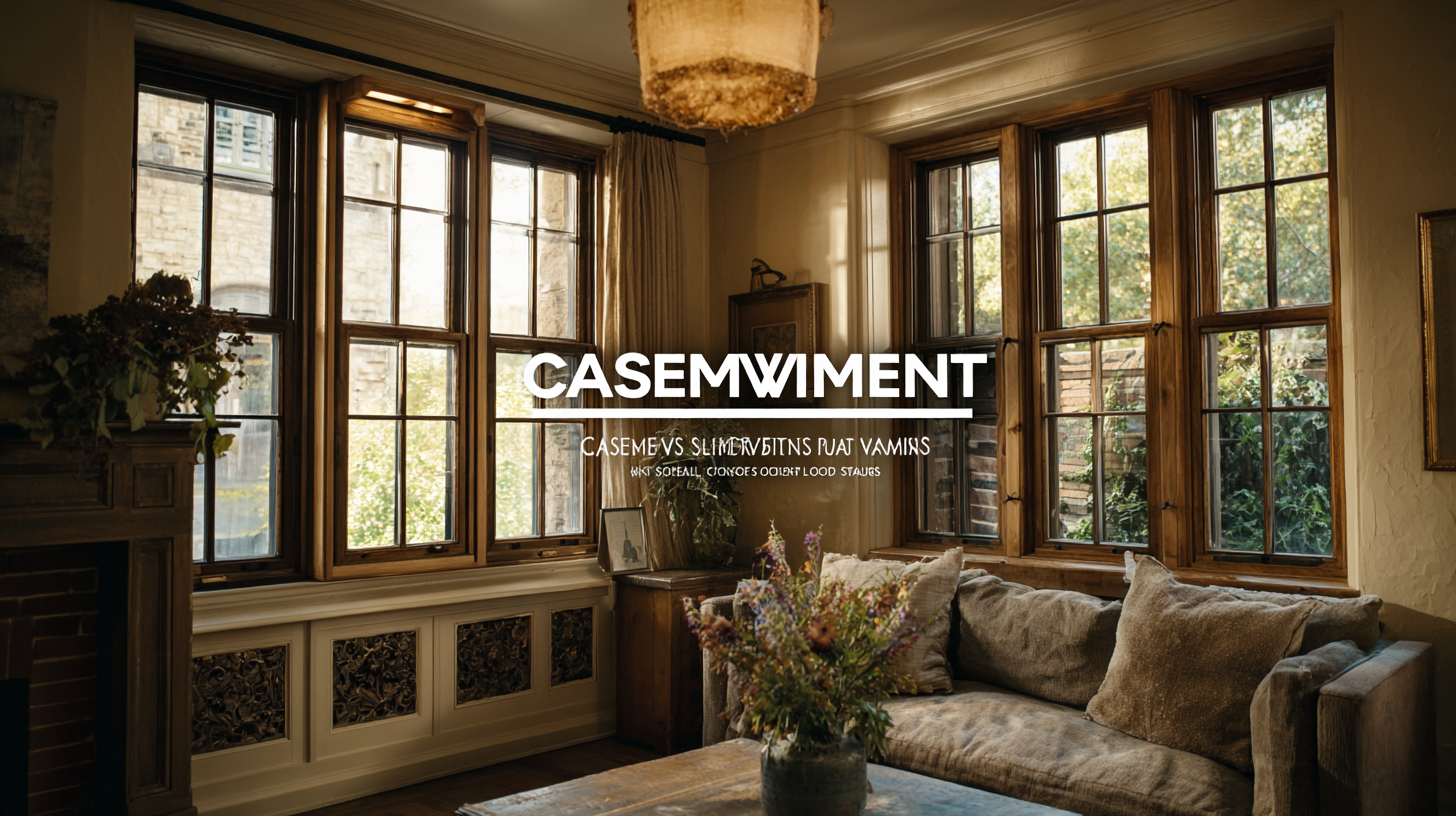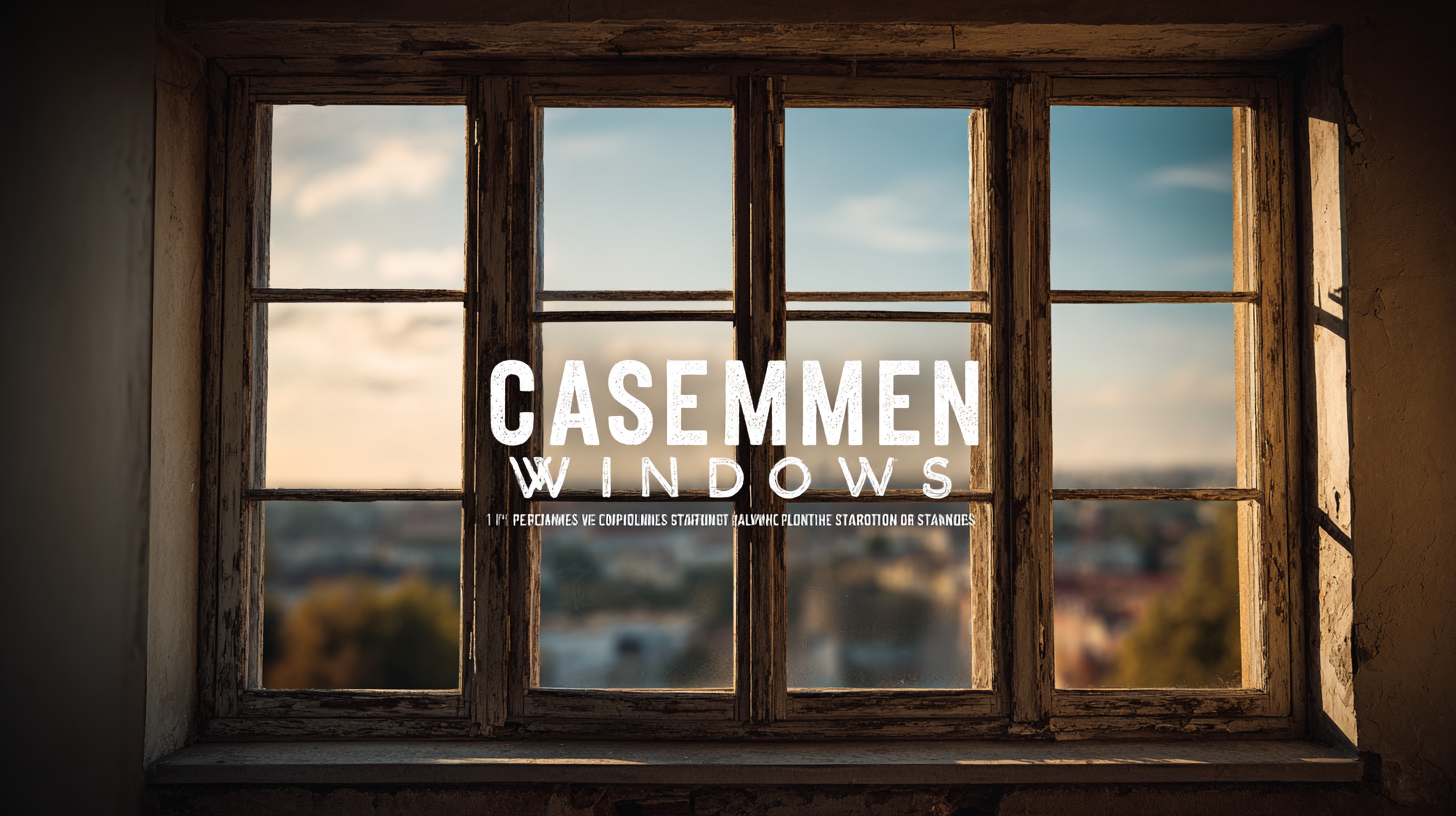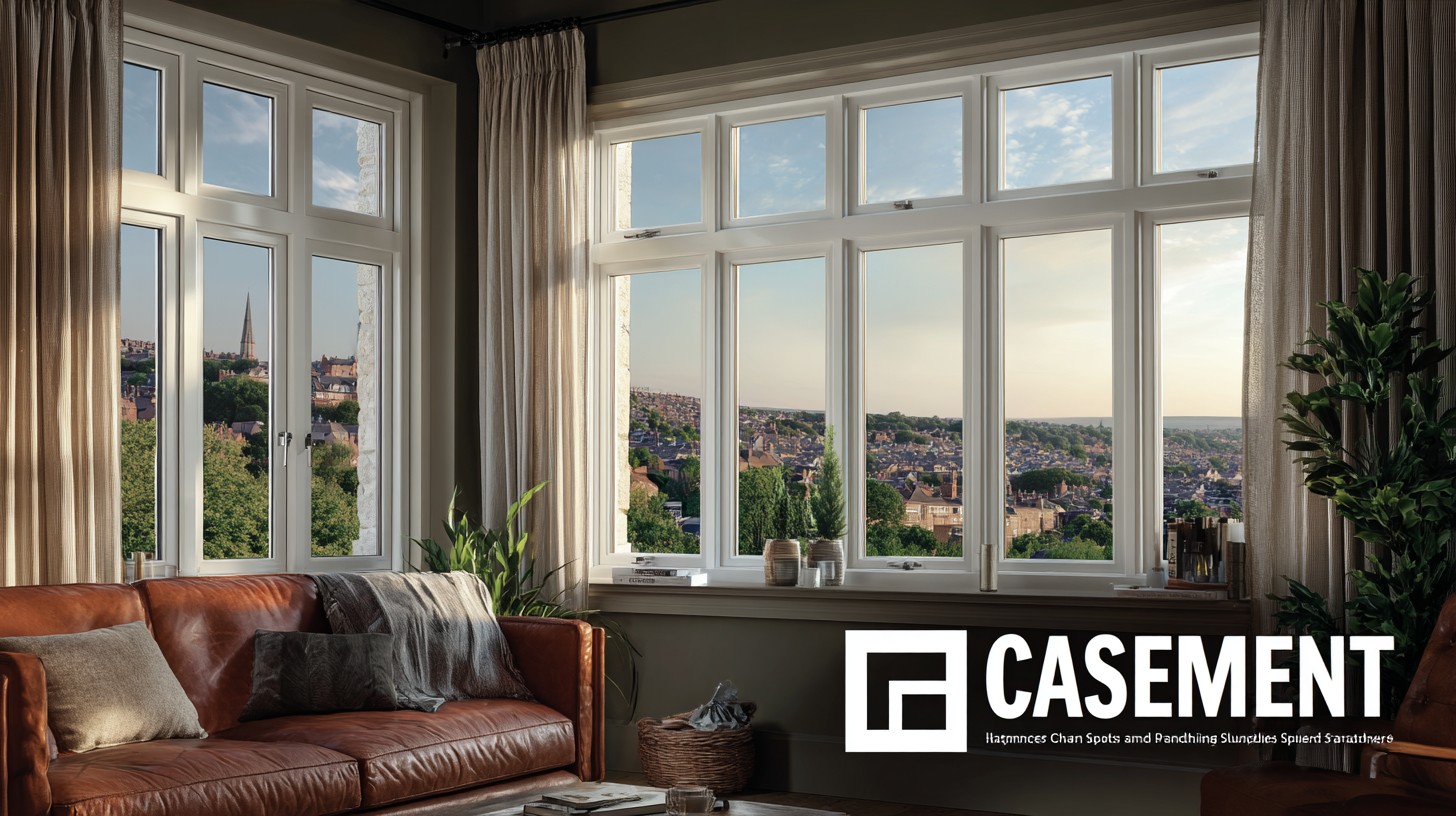In the competitive landscape of the window manufacturing industry, achieving the highest production standards for casement windows poses various challenges. According to the 2021 Global Fenestration Report, the demand for casement windows is projected to grow at a CAGR of 4.5% between 2022 and 2028, driven by increasing consumer preferences for energy efficiency and aesthetic appeal. However, manufacturers are often confronted with stringent import and export certifications that vary by region, leading to complexities in compliance and quality assurance. A comprehensive understanding of the regulatory landscape is essential for producers aiming to meet both domestic and international standards while simultaneously innovating in design and functionality. This blog will explore these challenges in depth, offering insights into how companies can navigate the intricacies of industry certifications while striving for excellence in casement window production.

When selecting premium casement window manufacturers, identifying key quality indicators is crucial for ensuring that the final product meets both aesthetic and functional standards. One primary indicator is material quality; manufacturers should utilize high-grade materials such as durable wood, resilient vinyl, or high-performance fiberglass, which contribute to longevity and energy efficiency. Additionally, examining the manufacturer's commitment to sustainability through eco-friendly sourcing can enhance product integrity and align with modern consumer values.
Another significant quality indicator is the level of craftsmanship and attention to detail in the manufacturing process. Advanced technologies, such as precision engineering and automated production lines, can greatly influence the final output quality. Prospective buyers should look for manufacturers that have earned certifications or awards that signify adherence to industry standards, such as the National Fenestration Rating Council (NFRC) certification. Furthermore, a robust warranty and after-sales support can indicate a manufacturer's confidence in their product's performance, providing assurance against potential defects or issues. By focusing on these indicators, buyers can select casement windows that not only elevate their property’s aesthetic but also promise lasting durability and efficiency.

In the pursuit of excellence in casement window manufacturing, various standards are critical to ensuring not only the quality but also the longevity and energy efficiency of the products. According to the Amercian Architectural Manufacturers Association (AAMA), windows that meet stringent performance criteria can significantly reduce heating and cooling costs by as much as 25% in a typical home. This highlights the importance of energy efficiency ratings, which should be a primary focus during the manufacturing process. Manufacturers should prioritize windows that achieve a minimum Energy Star certification, which serves as a benchmark for energy efficiency across different climates.
Moreover, durability and weather resistance are paramount in achieving the best production standards. Compliance with standards such as ASTM E330, which tests structural performance under wind pressure, is essential. Reports indicate that windows that exceed these standards show a remarkable resistance to water penetration and air leakage, thereby improving indoor comfort and security. As the market increasingly demands high-performance windows, incorporating advanced materials and manufacturing techniques that meet or exceed these established benchmarks will not only enhance product reliability but also reinforce brand reputation in a competitive industry.
When sourcing casement windows, it is crucial to pose the right questions to potential suppliers to ensure that their production standards meet your specific needs. Start by asking about their manufacturing process. Inquire how they ensure quality control throughout each stage of production, from material selection to final assembly. Understanding the techniques they use can provide insight into the durability and performance of their windows, which are essential qualities for long-lasting installations.
Another critical area to explore is the supplier's compliance with industry standards and regulations. Ask whether they adhere to relevant local and international standards, such as energy efficiency ratings and sustainability certifications. This will not only help you gauge the quality of their products but will also determine if their windows meet the necessary criteria for your projects. By addressing these essential questions, you can better navigate the challenges of choosing a reliable casement window supplier and ensure that your projects adhere to the highest standards.
| Criteria | Importance Level (1-5) | Supplier Ratings | Comments |
|---|---|---|---|
| Material Quality | 5 | 4.8 | High durability and energy efficiency. |
| Production Capacity | 4 | 4.5 | Can meet large orders in a short time frame. |
| Certifications | 5 | 5.0 | All relevant industry standards met. |
| Lead Times | 4 | 4.2 | Timely delivery with minimal delays. |
| Post-Sale Support | 5 | 4.9 | Excellent customer service and warranty options. |
| Customization Options | 3 | 4.0 | Limited customization available. |
When it comes to achieving optimal production standards for casement windows, the importance of material choices cannot be overstated. The selection of high-quality materials directly impacts not only the durability and aesthetic appeal of the windows but also their energy efficiency and performance over time. For instance, materials such as vinyl, wood, and aluminum each bring unique benefits and challenges. Vinyl offers low maintenance and excellent insulation properties, while wood provides a classic look and natural insulation. In contrast, aluminum is lightweight and highly durable, often favored for modern designs.
Understanding these material characteristics is essential for manufacturers aiming to deliver products that meet customer expectations. The choice of materials influences factors such as thermal performance, moisture resistance, and overall sustainability. For example, using recycled materials can significantly enhance a company's green credentials, appealing to environmentally conscious consumers. Therefore, manufacturers must carefully evaluate their material options, considering not only the immediate production costs but also the long-term implications for both the product and the environment.
By prioritizing the right materials, producers of casement windows can better navigate the complex landscape of performance standards and customer satisfaction.
When evaluating the long-term performance of casement windows, it is essential to consider various factors, including durability, energy efficiency, and maintenance requirements. According to a report by the Window and Door Manufacturers Association (WDMA), premium casement windows can offer a life expectancy of over 30 years when properly installed and maintained. This longevity is largely attributed to their robust design, which includes improved weather seals and high-quality materials that resist warping and fading.

Warranty guarantees play a crucial role in consumer confidence when selecting casement windows. A survey conducted by the National Association of Home Builders (NAHB) indicates that 75% of homeowners prioritize product warranties as a key criterion in their purchase decision. Leading manufacturers often provide extensive warranties, some extending up to 20 years for parts and labor. This not only safeguards the investment but also reflects the manufacturer’s commitment to quality and reliability, ensuring that the windows will continue to perform effectively under varying environmental conditions.




